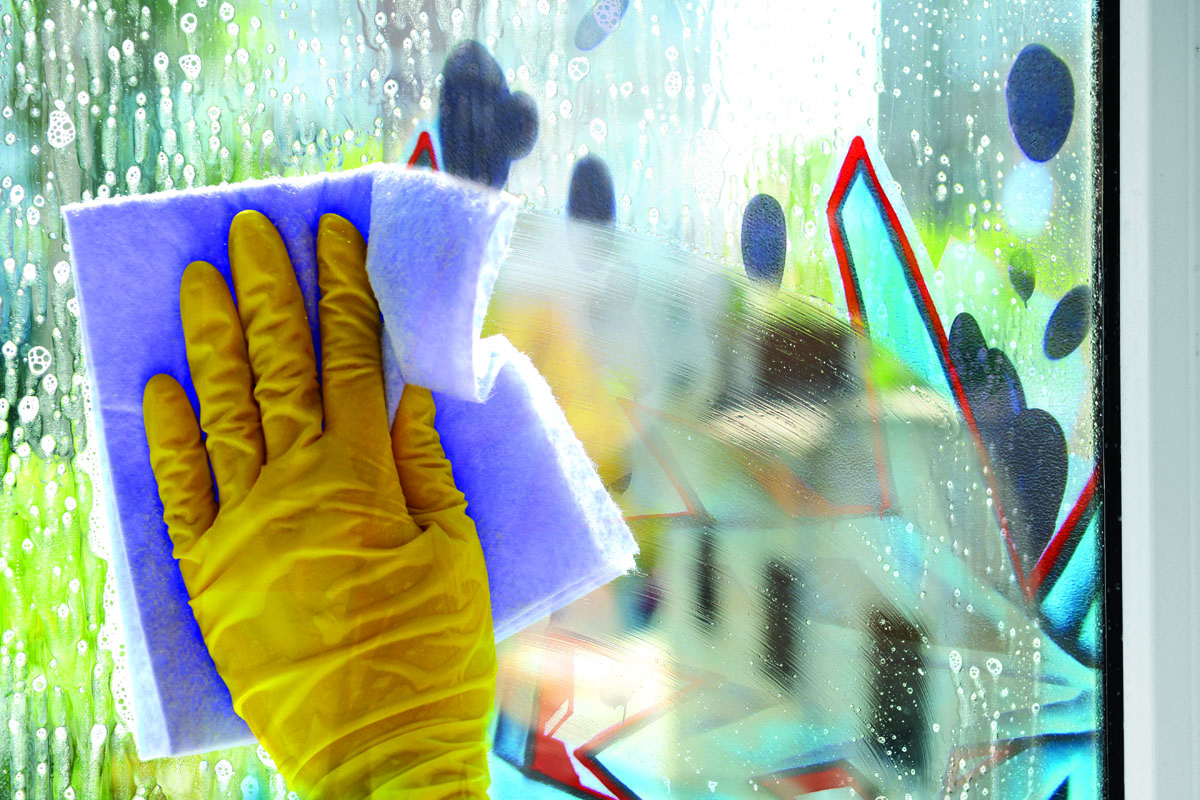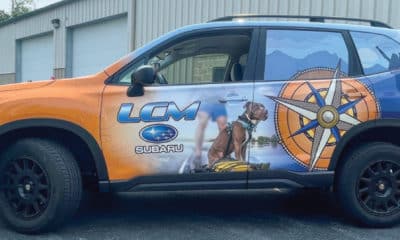We believe a little bit of you goes into every sign you deliver to a client. This is true with all of us – we’re always driven by that really cool sign we produced a year ago, the one we proudly tell customers that we made. It’s also true that signwork can be a type of legacy, and in most cases, it’s in both your and your client’s interest for the sign to look great and last as long as needed. However and unfortunately, there are forces of evil in the sign world, i.e., villainous elements that work to destroy and degrade your masterpieces. UV light, for example. UV rays from the sun or fluorescent lamps will fade colors much faster than you might first imagine, more so if the sign is exposed to direct sunlight. Especially in the South, where the sun rides more directly overhead.
Add acidic rain and smog, plus heat/cold dynamics to the enemies list because they can also wreak havoc. For vehicles, write in harsh detergents, rocks, sand and road grime as daily damagers.
How do you counter such assaults? Other than depositing your sign in the American Sign Museum, coatings are your best line of defense. Proper coatings can add lightfastness as well as a protective layer to a graphic. A glossy coating will often enhance an image by adding an illusion of depth, similar to what oil painting artists call “glazing,” a process that adds subtle intensity and translucence. You can also apply a matte coating if you want to subdue colors.
Pre-coatings can allow inks to adhere to otherwise difficult media such as glass or some plastics. You can also encapsulate an image by laminating both sides and allowing an overlap to seal the edges.
You have two choices when coating a print: liquid or roll-on laminate, but these choices are applied by different methods and require different processes. For example, certain digital print machines include a head-mounted, UV-varnish coating system that is used for special-effect applications or protective purposes. Usually identified as spot UV varnishes, these are machine-applied to the printing surface and cured or hardened by UV light during the printing process. The result is a glossy coating on the print surface that is often used for creating special effects.
You can apply liquid coatings via a liquid laminator device, a brush or with the typical aerosol-can form that is sprayed directly on the image after it has dried. Lamination films are applied with a laminating machine (cold or hot press) that applies pressure and sometimes heat to adhere the film to the image. A broad selection of such machines is on the market.
Advertisement
We think your digital print method should choose your laminating system because your necessary choices of ink and media may not relate to the lamination system. For example, aqueous ink prints can greatly benefit with enhanced UV protection that is gained through coating; however, you must use a solvent-based coating as opposed to a water-based coating that, obviously, would reactivate the inks. Also, aqueous prints require cold laminating, as heat can stir up deep-set moisture and cause fogging.
Prankster graffiti is also a problem. (We say “prankster” because real graffiti artists – “taggers” – prefer big walls and railway cars.) Obviously, graffiti-removal chemicals (such as acetone) will damage an unprotected print. Therefore, if the sign is to live in a graffiti-prone area, consider graffiti-resistant laminates or coatings that allow cleaning of the image without damage to the underlying sign or image.
While protection is the main function of a coating or overlaminate, there are other specialty products that may fit a need. Today, for example, you can buy lamination films with textured finishes. Think linen or wood grains. Also, a new velvety, “soft touch” laminate is available.
Protecting your work and your customers’ investment should be a high priority. Coatings and lamination films can not only protect a graphic but can also enhance the image. Often necessary and always sufficient, coatings and laminates truly finish the job.


 Tip Sheet4 days ago
Tip Sheet4 days ago
 Business Management2 weeks ago
Business Management2 weeks ago
 Women in Signs2 weeks ago
Women in Signs2 weeks ago
 Real Deal5 days ago
Real Deal5 days ago
 Benchmarks20 hours ago
Benchmarks20 hours ago
 Editor's Note1 week ago
Editor's Note1 week ago
 Line Time2 weeks ago
Line Time2 weeks ago
 Product Buying + Technology1 week ago
Product Buying + Technology1 week ago
















